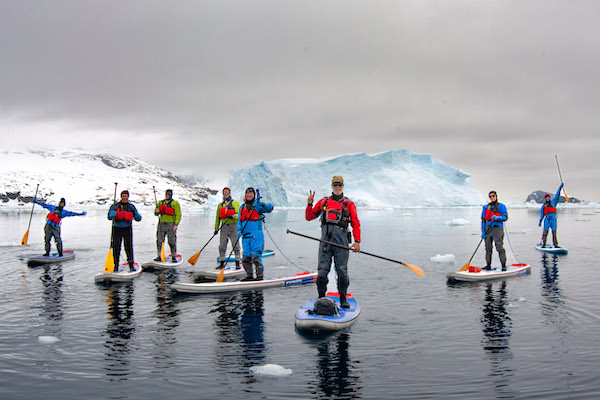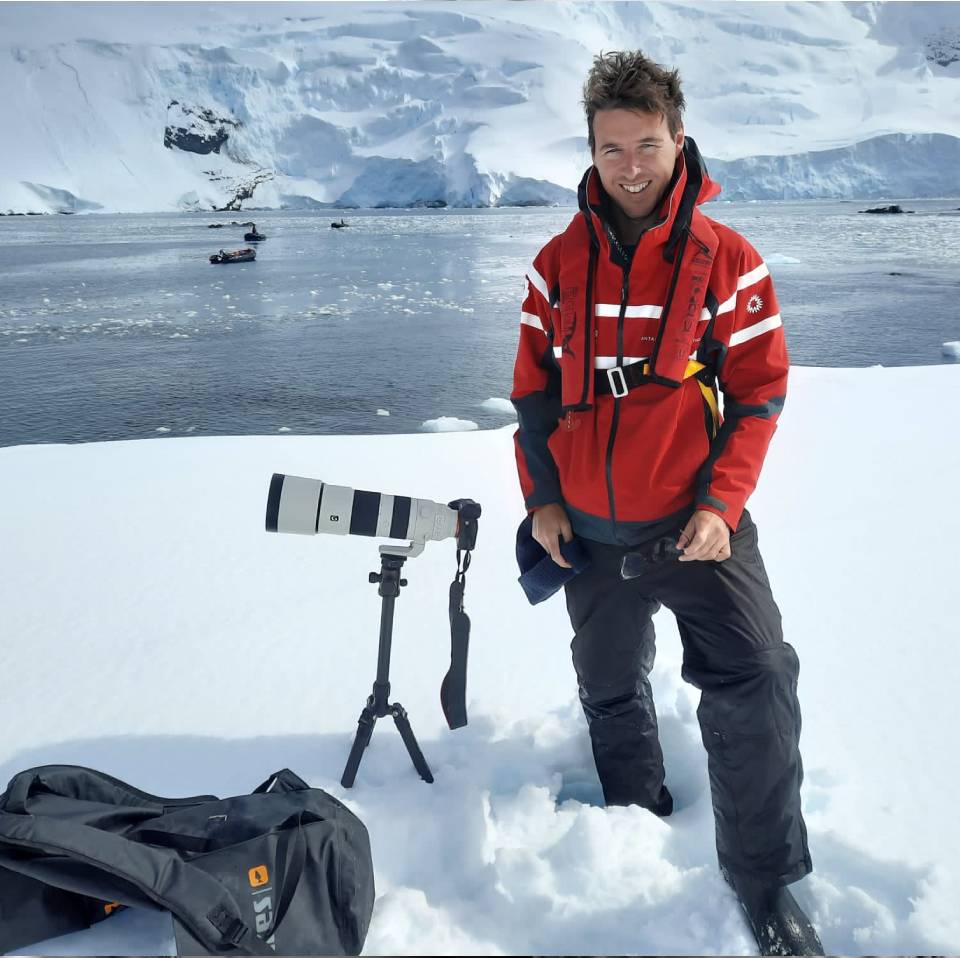Paddleboarding, often associated with calm beaches, rivers and tropical destinations, has found an extraordinary new setting - Antarctica.
On my last trip to Antarctica I had the opportunity to try stand-up paddle boarding (SUP). It was an incredible and surreal experience paddling through the quiet waters, hearing the ice and seeing the penguins move beneath the board.
It is an experience like no other and I will certainly never forget it. If you're considering this thrilling activity during your Antarctic expedition, I have written this guide to answer some of the most common questions associated with paddle boarding in Antarctica.
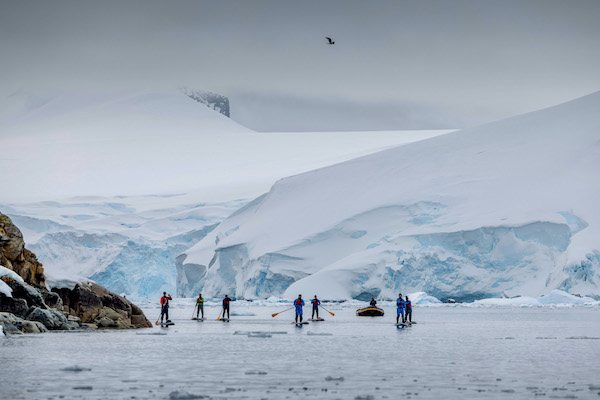
1. Is Previous Experience Required
One of the best aspects of paddleboarding in Antarctica is that prior experience isn’t mandatory, though it can certainly be helpful.
Many of the cruise operators offering paddleboarding excursions provide professional guides who ensure that beginners feel comfortable and confident. The calm waters found in some Antarctic locations make it feasible for even novices to give it a try.
However, if you’ve never been on a paddleboard, I would recommend you take a few lessons before the trip. Understanding basic balancing techniques, paddling, and turning will make the experience smoother and more enjoyable.
If you are not confident at standing up then you can always kneel down or even sit on the board as you paddle.
2. Fitness Level: How Fit Do You Need to Be?
Paddleboarding in Antarctica is not extremely physically demanding, but a moderate level of fitness is recommended. Since you’ll be navigating through cold water, sometimes against the current, you should have:
- Good balance: Essential for staying upright on the paddleboard.
- Upper body strength: Useful for paddling, especially if conditions become slightly more challenging.
- Core strength: Helps with stability and maintaining a good posture on the board.
- Endurance: Trips can last from 1 to 2 hours, so having enough stamina to enjoy the entire experience is key.
That being said, even travelers who don’t consider themselves athletes can participate, as paddleboarding is more about balance and coordination than raw strength or high-level fitness.
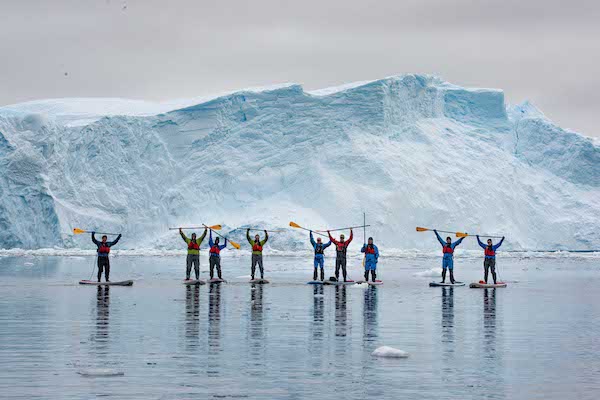
3. Safety Procedures
Safety is paramount when it comes to any adventure in Antarctica, and paddleboarding is no exception. Given the extreme and remote environment, expedition companies take precautions to make sure all participants have a safe experience.
Key Safety Measures Include:
- Qualified guides: Each paddleboarding trip is accompanied by trained professionals who are experienced with both paddleboarding and polar conditions. They guide you through the water and offer support if needed.
- Specialized equipment: Paddleboards are designed to withstand the cold temperatures, and participants are usually equipped with dry suits to protect against the frigid water, along with gloves, boots, and thermal layers.
- Life jackets and leashes: Wearing a life jacket is mandatory, and most operators will also require a leash that attaches you to the board. In case of a fall, this ensures that the board stays within reach.
- Weather considerations: Paddleboarding excursions are only offered in calm weather conditions. If the wind picks up or the water becomes choppy, trips can be rescheduled or canceled for safety.
- Support vessels: A support zodiac or kayak often accompanies the paddleboarding group, ensuring that help is nearby in case anyone gets tired or has difficulty navigating the water.
Guides also provide instructions on how to manage falling into the water (which can and did happen to my friend when we went paddleboarding) and how to get back on the board efficiently.
4. Does Paddleboarding Cost Extra?
Yes, paddleboarding in Antarctica generally comes at an additional cost.
While the price can vary depending on the cruise operator, paddleboarding is usually offered as an optional excursion for an extra fee, ranging from $150 to $300 per session.
The cost often covers the specialized equipment, guides, and safety support provided during the trip. Given the unique setting and logistics required for such an experience, the fee is considered reasonable by most travelers who want to enhance their Antarctic adventure.
Booking in advance is recommended, as spots can be limited due to the small group sizes allowed for each excursion to ensure safety and manage environmental impact.
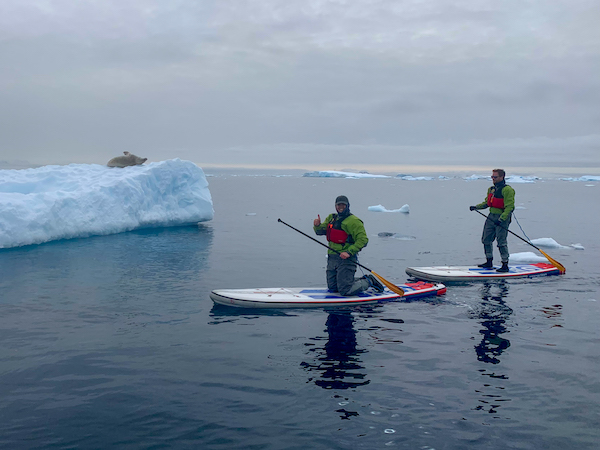
5. Why Paddleboarding in Antarctica is Worth It
While paddleboarding in Antarctica might come at an extra cost and requires some physical fitness and a willingness to brave the cold, the experience is absolutely unparalleled.
I’ve done many activities in Antarctica over the years and this was quite possibly my favorite!
Paddling through pristine waters surrounded by towering icebergs, observing seals lounging on the ice, and seeing penguins darting through the water, was unforgettable.

